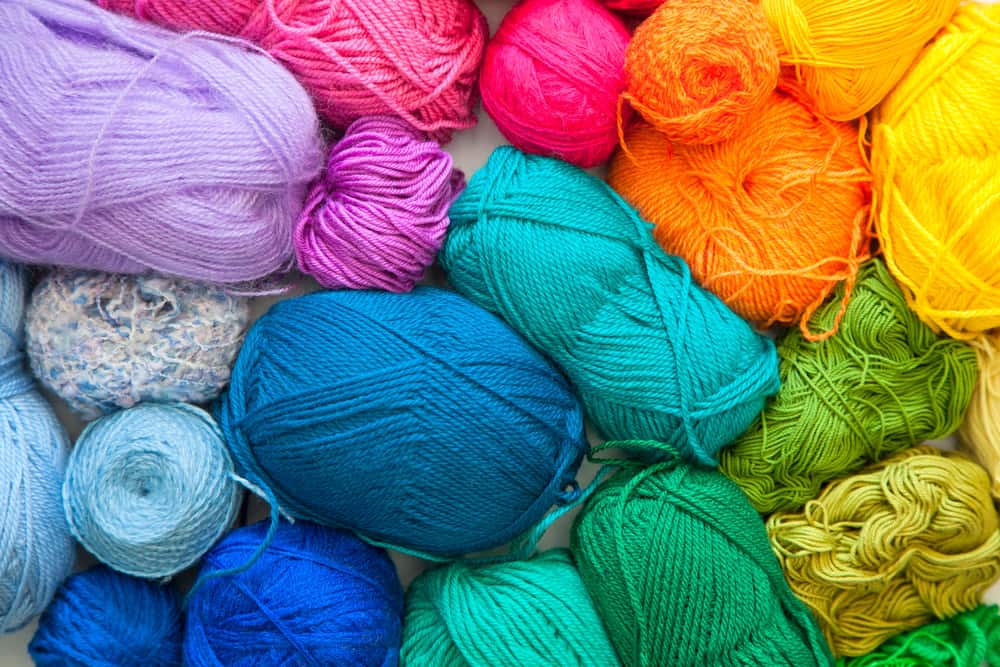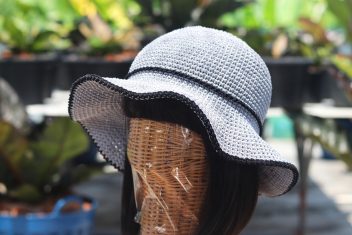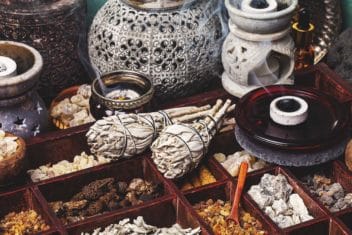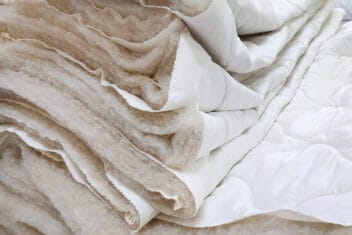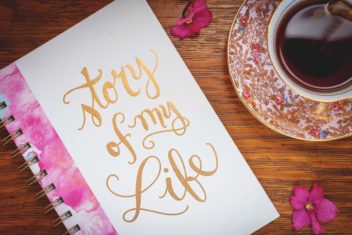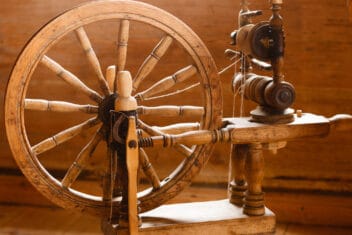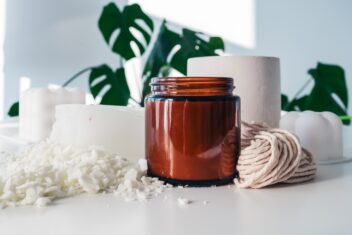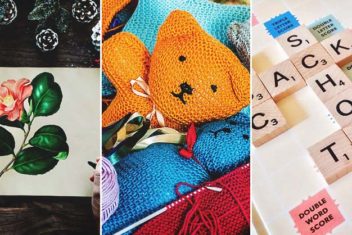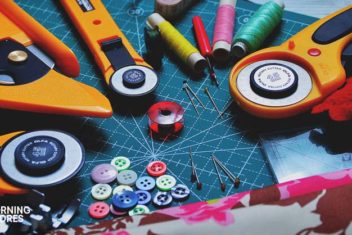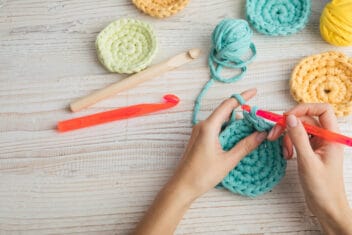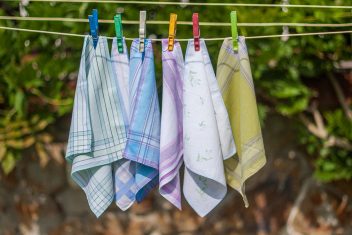Why do some yarn projects feel marvelous and others feel rough? Why do some look fabulous and others look cheap? There are many wonderful types of yarn, from alpaca wool to acrylic, and each creates a different look and feel.
If you’re new to knitting and crocheting, it can feel overwhelming seeing all the different types of yarn at the store. You need to pick the right variety to be successful with your project.
In this guide, you’ll discover the vast varieties of yarn and how to use them in your crafting journey, along with how to pick the best yarn for your project. Let’s dive in!
What Are Yarn Fibers?
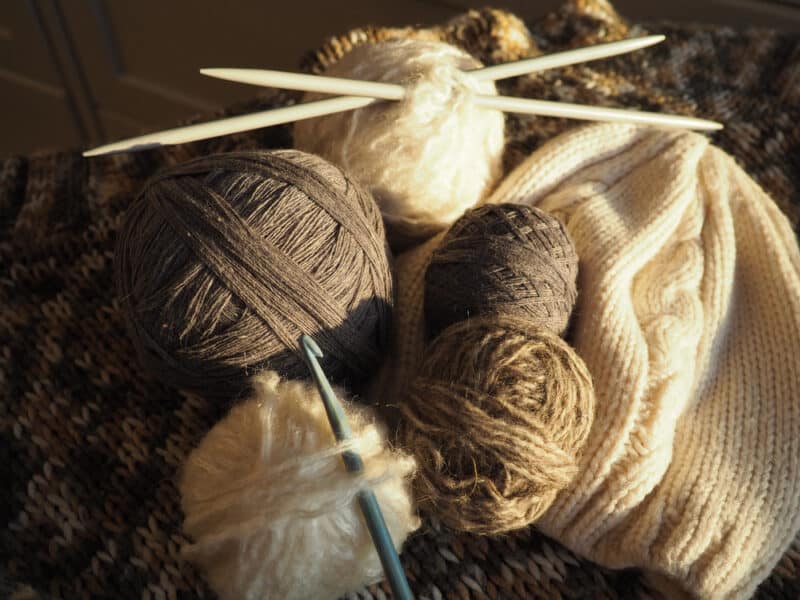
Before you pick your yarn for a new project, you must understand yarn fibers and how they influence your knitting or crocheting projects. You’ll find both natural and synthetic fibers when searching for yarn.
Each of these yarn types have pros and cons, which we’ll discuss shortly. There’s no one perfect type for every project.
The yarn fiber will determine the texture, shape, and color of the final piece, so it’s essential to pay attention to the type of fiber when selecting skeins (balls of yarn). To keep it simple, fibers are divided into animal, plant, and synthetic types.
Here is a list of the most common animal fibers:
- Silk
- Alpaca
- Wool
- Cashmere
- Angora
Plants include:
- Cotton
- Bamboo
- Linen
The last type of yarn fiber is manmade materials:
- Polyester
- Acrylic
- Nylon
Synthetic yarn is the best choice for beginners who don’t want to invest too much money at the beginning and want a wide selection of colors.
In the long term, these yarn fibers are not as sustainable as plant-based or animal fibers, but they are excellent if you want to teach children or experiment before committing to a complex project.
Benefits of Wool, Cashmere, and Alpaca
Wool is one of the most popular yarn choices because it’s soft and comes in many varieties. For instance, there are several wool yarns, such as:
These wool yarns are great if you want to make a garment like a sweater, as they are long-lasting, resistant to dirt, and flexible. Wool is more likely to last for decades with proper care and maintenance.
The only downside to wool is that the texture can be itchy on sensitive skin. If you have skin issues, wool might irritate, so it’s important to feel them and pick a soft variety.
Cashmere
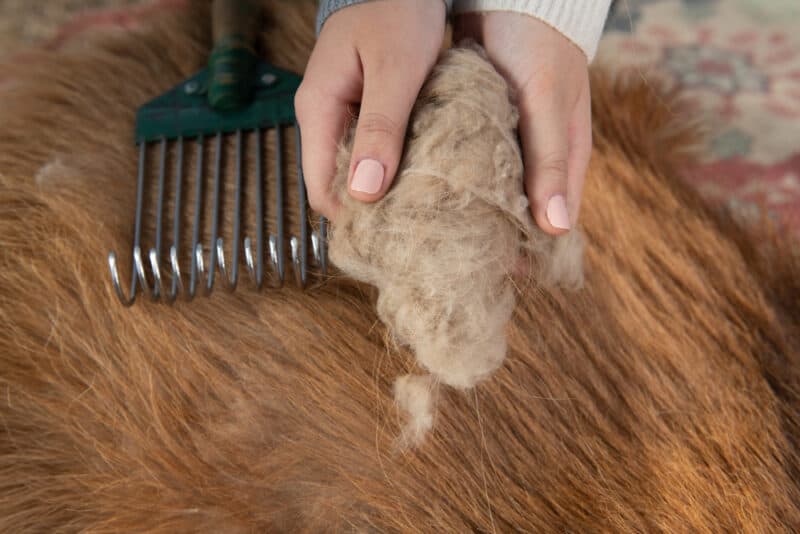
Cashmere is one of those luxurious yarn types that instantly feels like you’re wearing a fluffy cloud. If you’ve felt cashmere, it’s hard to forget its lovely texture.
When you’re looking for a yarn to make presents, cashmere is a superb choice. You can treat your loved ones to a luxury product and provide something cozy for the winter months.
You can also make cashmere items for summer days, since it’s lightweight. But it has excellent insulation and is incredibly soft.
Even though cashmere can be expensive, it’s worth the investment if you want to buy a soft, versatile yarn that will take your pattern to the next level.
Alpaca
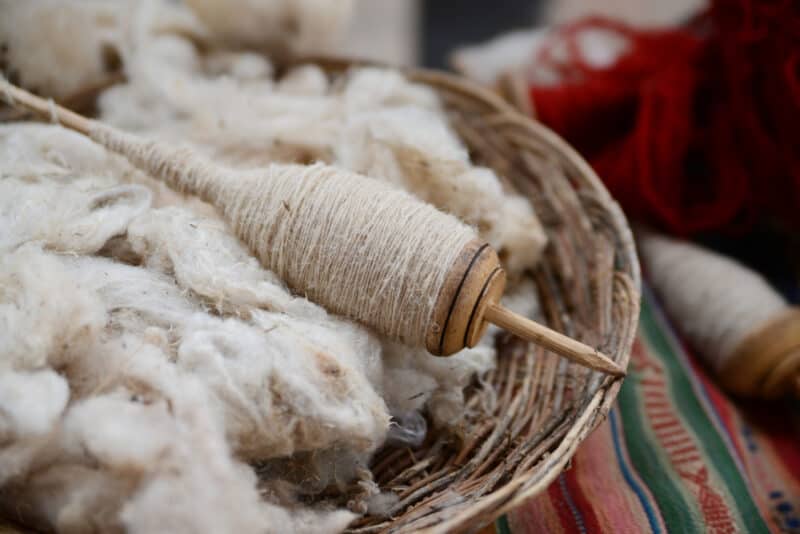
Alpaca yarn is an excellent fiber if you need a hypoallergenic material. You can’t go wrong with an alpaca scarf or blanket, as it’s good for keeping warm in cold temperatures because alpaca fiber is made up of hollow voids that trap air while remaining lightweight.
Alpaca can lose its shape because it doesn’t have the elasticity of some other fibers like merino wool. Alpaca can be rough on the skin, and it costs a pretty penny.
But it’s breathable, water-resistant, and retains heat, making it perfect for blankets, ponchos, and sweaters.
If you’re interested in dyeing yarn, alpaca is also excellent for experimenting with colors!
Are Plant-Based Fibers Better?
Plant-based yarn fibers are great for summer creations where you need lightweight material. You can also use bamboo, linen, cotton, or a blend for a soft texture and a lightweight fabric.
Cotton
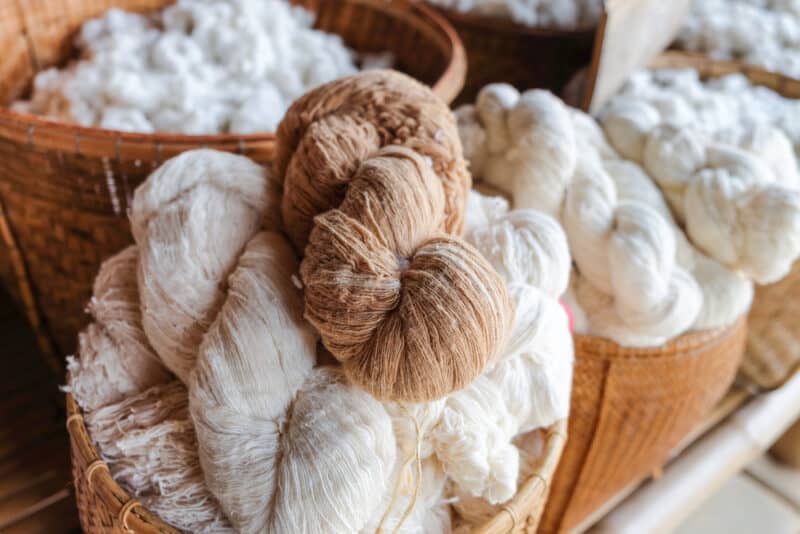
Similar to wool, there are multiple types of cotton available in the yarn market. Look for Egyptian, Pima, and American cotton. Typically, people use Egyptian cotton for soft items like pillows, but it’s the most expensive cotton variety.
American cotton is the standard choice as it tends to be more affordable and is available in an extensive range of colors. If you like doing colorful projects and want lightweight yarn, stock up when you find it on sale.
Cotton is also practical as you can wash the material in the washing machine, so you don’t have to worry about ruining your finished project once it needs to be cleaned.
Bamboo
Unlike other yarn fibers like cotton and wool, bamboo is a recent trend in the yarn world, but there’s a good reason for its increasing popularity. Made from bamboo plant fibers, this yarn is great for making delicate summer items, and it’s environmentally friendly.
Bamboo yarn is a little more expensive than synthetic yarn, but it will last longer and is soft on the skin. Bamboo yarn isn’t as warm as wool, so it’s not the best option for winter garments or blankets.
You can keep a combination of bamboo and wool yarns on hand, so you can pick and choose based on the season and your needs.
Use Man-Made Yarns as a Beginner
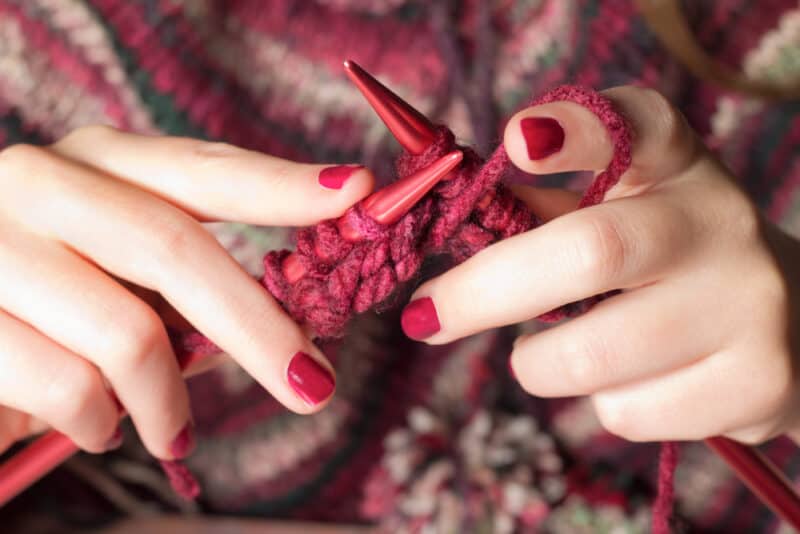
Your stage and skill level will influence the yarn you buy in crocheting or knitting. You don’t want to spend a lot of money on an expensive skein of yarn for your very first project. It will be a waste of money.
The best tip for new crocheters or knitters is to start with acrylic, rayon, or nylon yarn and practice your stitches before investing in lovely yarn. You can also use polyester, which is usually a mixture of manmade materials and natural materials.
If you’re new and looking for budget-friendly options, man-made fibers allow you to make new designs and stretch your yarn budget as you learn. They’re available in a massive range of colors, so you won’t run out of color choices.
Alternatively, you can use a blend of polyesters, acrylic, and wool. These options are cheaper than pure wool yarn balls, so you can still get that luxury feel without spending much money.
Novelty and Specialty Yarns
Beyond the actual material that the yarn is made from, you can also find novelty types like faux fur, chenille, tweed, heather yarn, and more. These are usually made out of manmade materials,
Tweed is a yarn with flecks of color, and chenille has short plies, making it feel super soft and fuzzy. Faux fur is acrylic and recreates the feel of a soft, luxurious fur.
Heathered yarn appears to be a solid color but it’s actually a blend of similar tones to give the appearance. Self-striping yarn has varying colors along the length so the finished piece has an interesting color pattern.
Thick/thin yarn varies in weight so your finished piece with have a thick area contrasting against a thinner area.
Marled yarn has different colors of yarn twisted together
Once you get started buying yarn, you’ll keep discovering new varieties as you go. You’ll always be coming across new yarns you’ve never seen before!
Steps for Picking Your Yarn
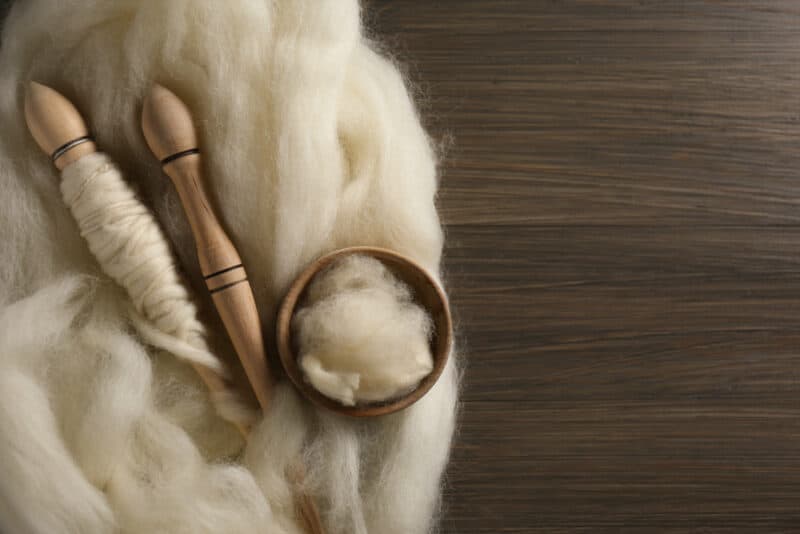
As well as the fibers, another feature of yarn is its weight. That basically just means how heavy and large the yarn is. The order goes:
- Lace (0 weight)
- Super Fine (1 weight)
- Fine (2 weight)
- Light (3 weight)
- Medium (4 weight)
- Bulky (5 weight)
- Super Bulky (6 weight)
- Jumbo (7 weight)
Depending on the weight, you’ll need a different size of needles. You can’t use a size 3 needle to knit jumbo yarn. Instead, you’d need something like a size 17 needle.
Choosing a Yarn
Here are the main questions you should ask yourself when picking a yarn:
- Will you wear the final item?
- How expensive is the yarn, and what will the project cost?
- Does the final item need to be machine washable?
- Are there a lot of colors in the pattern?
The last thing you want is to throw a delicate fiber in the washing machine and have your work unravel. Be sure to read the washing instructions before making a purchase and be realistic about your needs.
After you’ve asked yourself these questions, it’s time to think about the pattern. Most of the time, you can find the yarn weight requirements on the knit or crochet pattern, where you’ll also find information about hook or needle size.
As a beginner, these details might not seem important but they will determine whether the finished project looks like the original photo or not. You can easily go wrong on dimensions and gauges without the right yarn.
Pick the Yarn That You Love
This article gives you an overview of the different yarn and their benefits, but the choice will ultimately come down to your preference. Ideally, you can visit a store and feel the yarn in your fingers and see the colors in real life.
It’s also good to look at the label to find details about the type.
If you order online, you can check reviews to ensure it’s a good quality yarn. Then, place an order and experiment with your new yarn!
